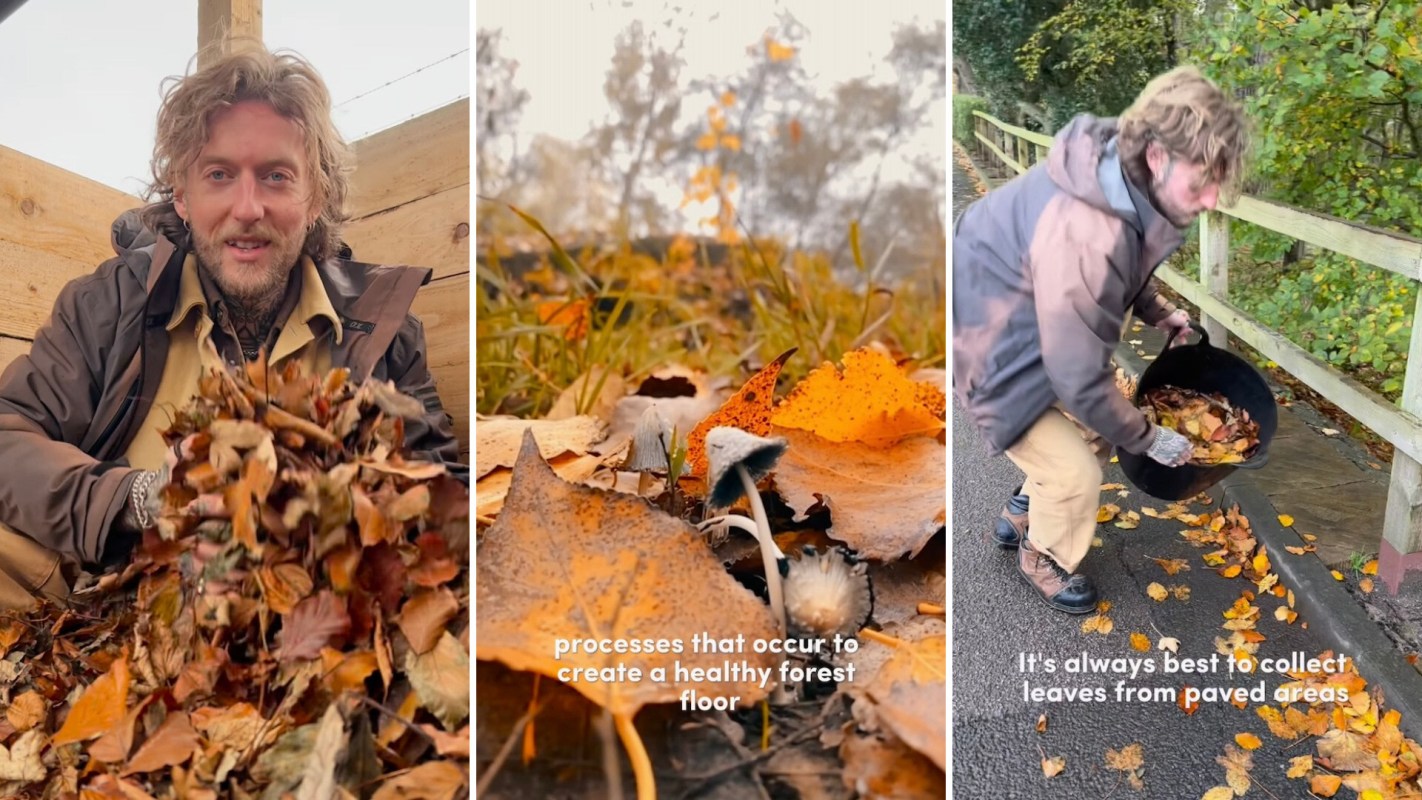Raking is a classic fall chore, but you might want to rethink bagging up those leaves. Besides depriving beneficial bugs of their winter home and creating pollution, you're actually wasting a valuable garden resource.
Here's what you can do with autumn leaves instead to give your plants a boost.
The scoop
In a recent video, experienced organic gardener Jamie Walton (@nettlesandpetals) goes over three ways to use autumn leaves "to help boost fertility in the garden," arranged from the quickest to the slowest.
The first is to use them as mulch when covering the beds at the end of autumn, with a layer of sheeting on top to keep them in place.
"By mulching the garden, we can mimic the natural processes that occur to create a healthy forest floor," he explains. "Leaves are a great autumn mulch for garden beds or pots, helping to keep the soil covered, suppress weeds, retain soil moisture, and also boost fertility as they break down."
The second tip is to make "leaf mold" — a form of fertilizer similar to compost, occurring naturally in forests.
"Making leaf mold is just so easy when compared to making compost, because there's no turning needed," says Walton. "All you do is put them in a big pile, bag them up, or put them into an empty compost bin to break down. I keep them damp to speed up the process."
He explains that the leaf mold can then be added to garden beds or potting soil — "as well as improving the structure and water retention of the soil, leaf mold attracts and feeds soil organisms and fungi that boost soil health."
Thirdly, Walton says you can use autumn leaves as "brown material" — meaning a carbon-rich ingredient — when making compost.
"I just store them nearby and add a layer in between green materials when I have them," he says. "This helps to create a rich and healthy compost that I add back onto the beds."
How it's helping
All of these different methods have the same basic goal: adding nutrients to the soil, just like in nature. The leaves also attract worms and beneficial microbes that help your garden plants grow, and when used as mulch, they protect the soil from the cold.
Since autumn leaves are so abundant, and since most people are trying to get rid of theirs, you can get this incredible resource for free. "It's always best to collect leaves from paved areas, where possible, instead of from grass or woodland, where they are enriching the soil and acting as a natural habitat for insects," says Walton.
What everyone's saying
Commenters were impressed with how easy this hack was to execute. "Such a simple but effective idea!" said one user. "Thanks for specifying it's better to collect from urban areas."
"I've taken to asking neighbors for their leaves as I can always use more," said another commenter. "Saving bags of a pile as brown material for winter composting as my go-to as well."
Join our free newsletter for easy tips to save more, waste less, and help yourself while helping the planet.









